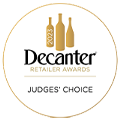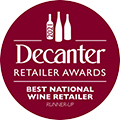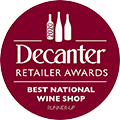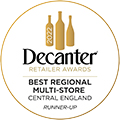Patchworks of gnarled vines, maritime pines and Romanesque churches against backdrops of rocky hillsides are the archetypal views of the Southern French wine regions. It’s a landscape that has attracted tourists, artists and winemakers alike, the last of which have brought invaluable expertise from the more classic areas of France and even the New World!
Crisp dry white wines are abundant in Gascony and the South-West, some using grapes once destined for Armagnac, whereas the whites of Languedoc-Roussillon tend to be bigger and gentler. Here in Languedoc-Roussillon, Mediterranean and Rhône white grapes vie with Sauvignon Blanc and Chardonnay for space. Within the Languedoc, Picpoul de Pinet is de rigueur for delivering pure summer pleasure whilst the whites from the cooler climate of Limoux are more serious, Burgundian even.
The pale rosé wines of Provence have caught the imagination in the last few years, but there are rivals – often better value – from the Languedoc and these lookalikes can be excellent. Gascony rosés, made from Bordeaux and south-western grapes, tend to be more blackcurranty.
Overall red wines are the most important style in the South which has a diversity of climates and terroirs that allows it to produce a vast number of very different wines. Languedoc-Roussillon is arguably the area of the most wine innovation in France making both varietal wines alongside a roster of AOCs such as Minervois, Corbières and (Coteaux du) Languedoc. Provence’s most famous red is from beside the sea at Bandol whereas Gascony and the South-West fields Bergerac, Pécharmant and Madiran as its star players.
Pays d'Oc & Vin de France
The Pays d’Oc covers the old Occitan-speaking departments of Gard, Hérault, Aude and Pyrénées-Orientales thus comprising one of the world’s most productive wine regions. The ‘Vin de Pays’ name was recently dropped in favour of ‘Indication Géographique Protégée’ (IGP) with the aim of more standardisation across the EU. The Pays d’Oc classification has allowed the French to play the Chileans and Australians at their own varietal game. In whites, Sauvignon Blanc and Chardonnay have been tremendously successful, with Rhône grapes such as Viognier and Marsanne thriving too. In reds, Merlot and Syrah have led the way with Malbec coming on board, whilst also exploiting all those wonderful old Carignan vines.
At a similar time ‘Vin de France’ replaced the somewhat tarnished ‘Vin de Table’ name and allows producers the flexibility to blend together wines from across IGP areas. It’s also used by individual estates to make wines that don’t conform, notably because their chosen grape variety is not authorised for their region.
Le Sautarel represents a range of easy-drinking, appealing wines, the sort that you would expect to see in a good bistro in France. The La Cabane blends and Rémi & Jérôme varietal wines, all packed with flavour, are made for us near Carcassonne by Xavier Roger, son of one of our Sancerre suppliers, Jean-Max Roger. His Martinfort wines are generally from older vines and lower yields. The Petite Vigne wines come from Foncalieu, a sizable but quality driven co-operative based near Carcassonne but with growers in Gascony and Provence too. We are most proud however of the Tanners labels where we work with specialists in each grape variety to bring you the very best of the region.
Gascony & SW France
This is Foie Gras and duck country and the region’s naturally crisper whites and leafier reds cut through such foods like a knife. Dry whites from the hinterland of Bordeaux – Duras and Bergerac in particular – are made from Sauvignon Blanc and Sémillon with sometimes some Muscadelle added. Travelling south into Gascony and Béarn, lesser known grapes come into play such Petit Manseng, Gros Manseng, Petit Courbu and Arrufiac. Formerly used for Armagnac production, Colombard and Ugni Blanc, are responsible for many simply dry whites often labelled IGP Côtes de Gascogne, Comté Tolosan or Gers. The Plaimont co-operative dominates the Saint-Mont appellation and has long been at the forefront of this crisp, fresh white wine revolution. Between Pau and the Pyrenees, Jurançon is famous for both dry and sweet whites.
Rosé wines from the South-West generally use Bordeaux varieties and tend to be a bit deeper in colour than those from further east and have excellent fruit flavours. Domaine de Pellehaut, a family-owned estate in Gascony that originally started in cattle farming, supplies us with both Tanners Rosé and Tanners Gascony Dry White.
Perhaps the leading red wine from the region is Madiran, based on the robust Tannat grape variety. Pécharmant, a favoured sub-appellation of Bergerac which has iron-rich slopes above the River Dordogne, produces another structured red wine. Here, Château de Tiregand, run by François-Xavier de Saint-Exupéry, from one of France’s better known old families, is making characterful, claret-like reds. The reds of the Dordogne and Garonne valleys – Bergerac, Buzet and Côtes du Marmandais included – are made from Merlot, Cabernet Sauvignon, Cabernet Franc and Malbec, the last of which reaches its apogee up the Lot Valley in Cahors.
The sweet wines are tangier and less grapey than the Muscats of Languedoc-Roussillon. Gascony’s Pacherenc du Vic-Bilh and Béarn’s Jurançon rely on semi-dried grapes from the same local varieties that are used for the dry whites. Monbazillac and Saussignac are more akin to Barsac, being the product of botrytised Sauvignon Blanc and Sémillon grapes. Along the slope from the landmark Château de Monbazillac and with tremendous views over the Dordogne Valley the Gérardin family’s Château Le Fagé makes inspiring Monbazillac as well as fine dry white, red and rosé.
Languedoc-Roussillon
The warmer climate of Languedoc-Roussillon leads to dry white wines which are fuller and less crisply refreshing than those of the South-West. The exception is Limoux which has a burgeoning reputation for fine Chardonnay and Chenin Blanc wines to add to its repertoire of Blanquette de Limoux, made for the local Mauzac grape. Here on a plateau at 1,150 feet the vines of Château Rives-Blanques thrive in the cool climate, tended by charming Dutch/English couple Jan and Caryl Panman, and son, young Jan-Ailbe. From down on the plains Picpoul de Pinet is now fashionable and we are fans of Domaine des Lauriers, a 40 ha estate run by Marc Cabrol, who skilfully combines winegrowing with selling agricultural machinery!
There are a host of other varieties planted, mostly indigenous to the Rhône Valley and Mediterranean littoral including Marsanne, Roussanne, Viognier, Vermentino, Bourboulenc, Clairette Blanche, Grenache Blanc and Macabeu. They work well in flavoursome Rhône-style blends bottled as Coteaux du Languedoc and under an array of IGP names such as Côtes Catalanes. Further single varietal wines can be found in our Pays d’Oc section.
The rosé wines of Languedoc-Roussillon can be very attractive without the price tag of rosés from Provence. They are often made from Cinsault grapes, sometimes blended with Terret Noir and Grenache. Piquepoul Noir has also made great strides recently, a black grape mainly used for a blush-pink rosé. Syrah and Mourvèdre are also employed in rosé production which, in volume terms, now rivals white wine production in the Languedoc.
Superb reds are produced throughout the Languedoc in an arc following the Mediterranean from Montpellier in the Hérault past Sète and Béziers, and down past Narbonne in the Aude department. The best wines tend to come from the slopes, often from vineyards which are stony and difficult to work while the valley floors produce more everyday wines. Organic viticulture is on the increase as growers decide that the warm, dry climate allows them to forgo conventional treatments. Arguably the best wines are blends based on Syrah, Grenache and Mourvèdre where the three complement each other admirably. Merlot and Cabernet Sauvignon, both interlopers, perform well as does indigenous old-vine Carignan as a single varietal wine. Please also see our Pays d’Oc & Vin de France section.
In the East, Pierre Clavel makes some of the region’s best wines from vines in favoured sub-districts of Languedoc AOC (until recently called Coteaux du Languedoc) namely Pic St-Loup and La Méjanelle. At Mas de la Seranne a passion for wine inspired Isabelle and Jean-Pierre Venture to return after twenty years to their native Languedoc and begin winemaking. They have 10 ha in the Coteaux d’Aniane, something of a wine-making hot spot, up country from Montpellier. Domaine La Condamine L'Evêque is located at Nézignan l'Evêque, a medieval village set above the River Hérault in the Côtes de Thongue. Here Guilhem Bascou continues the work of his parents who were early pioneers of single varietal wines. Frédéric Albaret has expanded Domaine Saint Antonin from nothing to 30 ha on the schist soil that is typical of the Faugères appellation, making variouscuvées,all certified organic.
Minervois occupies the southern slopes of the Montagne Noire overlooking the Aude Valley.We have bought from pretty Château Sainte-Eulalie, close to La Livinière, for many years dealing with Isabelle and Laurent Coustal and their predecessors. Down the valley and close to Narbonne is Domaine deCendrillon. Owned by the Joyeux family for centuries, their aim is to be the top property in Corbières, an aim they are well on their way to achieving! Hidden away in the hills of southern Corbières, and fully into Cathar country,is the small quality driven co-operative of Castelmaure et Embres which makes full-flavoured, gutsy wines. This area of Corbières is sandwiched between Fitou vineyards on both sides.
Roussillon is the southernmost part of Languedoc-Roussillon and comprises many of the Pyrenean foothills north of the Spanish border as well as the picturesque coastline of the Côte Vermeille. The scenery here is spectacular with valleys running down from the Pyrenees, vineyards clinging to the sides and castles on top. Herby dry reds, evocative of the local, scentedgarrigueundergrowth, come under various epithets: Côtes du Roussillon, Côtes du Roussillon-Villages, Collioure, Côtes Catalanes and Pyrénées-Orientales included. Domaine Boudau, formerly specialising in sweet wines, now principally produces full and satisfying Roussillon reds.
The sweet white wines of Languedoc-Roussillonare generally made from Muscat and are usually lightly fortified to makevin doux naturel. Muscat de St-Jean-de-Minervois and Muscat de Frontignan are both smaller appellations than Muscat de Rivesaltes which covers much of the Roussillon region. The Saint-Jean-de-Minervois appellation is dominated by a small co-operative hidden in the foothills of the Montagne Noir. Fine sweet red wines, made in a Port style but usually based on Grenache grapes, come from Rivesaltes, Banyuls on the coast and Maury which is up country from Perpignan. Domaine Boudau, run by brother and sister Pierre and Véronique Boudau, is based at Rivesaltes and makes lovely sweet Muscat and Grenache wines, ‘Grenat’ being a fresh ruby style.
Provence
East of the River Rhône, Provence is a large area and generally now best known for its rosé wines, consumed in large quantities by holiday makers in villas and restaurants, as well as on the yachts moored in the picturesque harbours along the coast! This has led to some of the best known examples being able to sell for a lot of money and generally prices are high here. With a little effort, however, decent value can be found as at Château du Galoupet whose rosé has a classic Provençal style and whose terrace looks out over the Mediterranean to the Île de Porquerolles.
Bandol is one of the best known areas for red wines here and makes big, long-lived wines based on the Mourvèdre grape. That from Céline and Jérôme Pascal’s Domaine Le Galantin has great depth of flavour while their rosé wine has wonderful intensity, again mainly from the Mourvèdre grape. The Lubéron and Vaucluse, with their picture perfect Provençal villages, are officially classified within the Rhône Valley.































